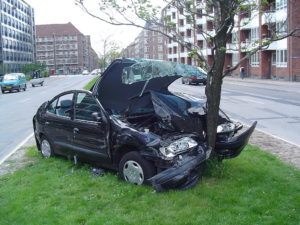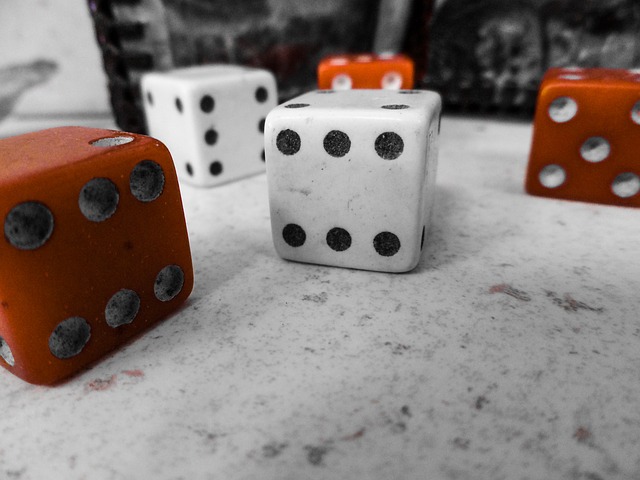5.2: Calculating the Probability of an Event
Introduction
What you’ll learn to do: Calculate the probability of individual and overlapping events in a variety of problems
Probability is the likelihood of a particular outcome or event happening. Statisticians and actuaries use probability to make predictions about events. An actuary that works for a car insurance company would, for example, be interested in how likely a 17 year old male would be to get in a car accident. They would use data from past events to make predictions about future events using the characteristics of probabilities, then use this information to calculate an insurance rate. In this section, we will explore the definition of an event, and learn how to calculate the probability of it's occurance. We will also practice using standard mathematical notation to calculate and describe different kinds of probabilities.
Learning Outcomes
- Describe the terms: sample space, outcome, and event
- Calculate the probability of an event
- Use standard probability notation
- Calculate the probability of a complementary event
- Calculate the probability of two independent events both occurring together
- Calculate the probability of two mutually exclusive events
- Calculate the probability of two events that are not mutually exclusive
- Calculate a conditional probability.
Basic Concepts
Learning new Math vocabulary and notation
You've seen before that learning mathematics is similar to learning a new language -- it takes repetition and practice to obtain new vocabulary and symbols. Probability is no different. The set of vocabulary and symbols used in probability will likely be completely unfamiliar to you unless you've studied probability before. Remember to read the text with your pencil, writing out the terms, definitions, and practice problems multiple times in order to learn them. You'll need to spend time with these new ways of thinking to make them your own. We begin with some terminology.
We begin with some terminology.
Events and Outcomes
- The result of an experiment is called an outcome.
- The sample space is the set of all possible outcomes.
- An event is any subset of the sample space. An event could include one outcome, more than one outcome, or even no outcomes (i.e.: the empty set).
example
Suppose we roll a standard 6-sided die. Describe the sample space and give some examples of outcomes and events.Answer: The sample space is the set of all possible outcomes: {1,2,3,4,5,6} Some examples of outcomes:
- We roll a 1
- We roll a 5
- We roll a number bigger than 4: {5, 6}
- We roll an even number: {2, 4, 6}
- We roll an 8: [latex]\emptyset[/latex] (it is not possible to roll an 8 when rolling a standard 6-sided die)
Basic Probability
If all outcomes are equally likely, we can compute the probability of an event E, [latex]P(E)[/latex] using this formula:[latex]P(E)=\frac{\text{Number of outcomes corresponding to the event E}}{\text{Total number of equally-likely outcomes}}[/latex]
The probability of an event is always a number greater than or equal to 0 and less than or equal to 1.example
If we roll a 6-sided die, calculate- P(rolling a 1)
- P(rolling a number bigger than 4)
Answer: Recall that the sample space is {1,2,3,4,5,6}
- There is one outcome corresponding to “rolling a 1,” so the probability is [latex]\frac{1}{6}[/latex]
- There are two outcomes bigger than a 4, so the probability is [latex]\frac{2}{6}=\frac{1}{3}[/latex]
example
Let's say you have a bag with 20 cherries, 14 sweet and 6 sour. If you pick a cherry at random, what is the probability that it will be sweet?Answer: There are 20 possible cherries that could be picked, so the number of possible outcomes is 20. Of these 20 possible outcomes, 14 are sweet, so the probability that the cherry will be sweet is [latex]\frac{14}{20}=\frac{7}{10}[/latex]. There is one potential complication to this example, however. It must be assumed that the probability of picking any of the cherries is the same as the probability of picking any other. This wouldn't be true if (let us imagine) the sweet cherries are smaller than the sour ones. (The sour cherries would come to hand more readily when you sampled from the bag.) Let us keep in mind, therefore, that when we assess probabilities in terms of the ratio of favorable to all potential cases, we rely heavily on the assumption of equal probability for all outcomes.
Try It
[ohm_question]838[/ohm_question]Cards
A standard deck of 52 playing cards consists of four suits (hearts, spades, diamonds and clubs). Spades and clubs are black while hearts and diamonds are red. Each suit contains 13 cards, each of a different rank: an Ace (which in many games functions as both a low card and a high card), cards numbered 2 through 10, a Jack, a Queen and a King.example
Compute the probability of randomly drawing one card from a deck and getting an Ace.Answer: There are 52 cards in the deck and 4 Aces so [latex]P(Ace)=\frac{4}{52}=\frac{1}{13}\approx 0.0769[/latex] We can also think of probabilities as percents: There is a 7.69% chance that a randomly selected card will be an Ace. Notice that the smallest possible probability is 0 – if there are no outcomes that correspond with the event. The largest possible probability is 1 – if all possible outcomes correspond with the event.
This video demonstrates both this example and the previous cherry example on the page. https://youtu.be/EBqj_R3dzd4Certain and Impossible events
- An impossible event has a probability of 0.
- A certain event has a probability of 1.
- The probability of any event must be [latex]0\le P(E)\le 1[/latex]
Try It
[ohm_question]7130[/ohm_question]Licenses & Attributions
CC licensed content, Original
- Revision and Adaptation. Provided by: Lumen Learning License: CC BY: Attribution.
CC licensed content, Shared previously
- Math in Society. Authored by: Open Textbook Store, Transition Math Project, and the Open Course Library. Located at: http://www.opentextbookstore.com/mathinsociety/. License: CC BY-SA: Attribution-ShareAlike.
- dice-die-probability-fortune-luck. Authored by: jodylehigh. License: CC0: No Rights Reserved.
- Basics of Probability - events and outcomes. Authored by: OCLPhase2's channel. License: CC BY: Attribution.
- Basic Probabilities. Authored by: OCLPhase2's channel. License: CC BY: Attribution.
- Question ID 7130. Authored by: WebWork-Rochester, mb Lippman,David. License: CC BY: Attribution. License terms: IMathAS Community License CC-BY + GPL.

